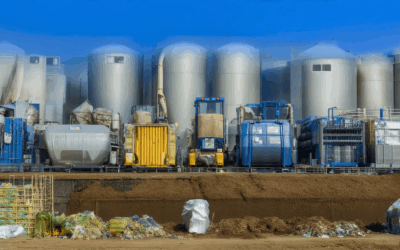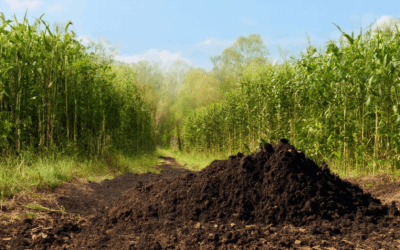Imagine the vast potential lying dormant in the waste we generate every day. While many view trash as a burden, others see it as a hidden treasure trove of renewable resources waiting to be unlocked. waste into renewable resources isn’t just a catchy phrase—it’s a reality that’s reshaping industries and fostering innovation. From converting everyday household scraps into energy to transforming industrial waste into valuable materials, the possibilities are endless. This article delves into the fascinating world of waste transformation, exploring how waste can be repurposed, the technologies driving this movement, and the benefits it brings to our planet. Whether you’re curious about the science behind it, eager to learn real-world examples, or interested in the future of sustainability, this journey into the realm of renewable resources promises to be both enlightening and inspiring.

Types of Waste That Can Be Converted Into Renewable Energy
Various types of waste can be transformed into renewable energy through advanced processes. Here are some common examples:
- Organic Waste: Food scraps, agricultural waste, and wastewater can be converted into biogas through digestion, pyrolysis, and gasification processes. These methods break down organic material to produce gases like methane and carbon monoxide, which can be used to generate electricity or heat.
- Municipal Solid Waste (MSW): MSW contains a significant amount of organic materials that can be processed to generate renewable energy. Technologies like anaerobic digestion and pyrolysis are commonly used to extract energy from discarded materials.
- Construction and Demolition Waste: This waste stream contains materials like wood, cardboard, and metal that can be recycled or converted into renewable energy through composting and pyrolysis processes.
- Plastic Waste: While challenging, plastic waste can be converted into biogas through advanced thermal processes. However, this requires specialized technologies and infrastructure.
- Electronic Waste (e-Waste): Many electronic devices contain valuable materials like metals and plastics that can be recovered and processed to generate energy. Certain recycling methods can also produce biogas as a byproduct.
- Industrial Waste: Industrial byproducts such as agricultural waste, sludge, and leftover materials from manufacturing processes can be converted into renewable energy through digestion and pyrolysis. Additionally, materials like tires can be pyrolyzed to produce biochar, a carbon-rich material that can be used for soil amendment.
- Household Hazardous Waste: Some components of household hazardous waste, such as batteries, can be processed to recover metals and generate energy. However, this requires careful handling and specific technologies.
These processes not only convert waste into renewable energy but also contribute to reducing landfill waste and promoting sustainable resource management. By utilizing these methods, we can create a more circular economy and minimize our environmental footprint.
For more information on how Pyrolysium can help transform waste into renewable energy, visit our website at Pyrolysium .
Is Waste a Renewable Resource?
Waste can be considered a renewable resource under certain contexts and through specific management practices. Here’s a breakdown:
-
Biodegradable Waste : Materials like paper, cardboard, and food scraps are biodegradable, meaning they can break down naturally. This decomposition can return nutrients to the environment, making them renewable.
-
Recycling and Reuse : Recycling transforms waste into new products, reducing the demand for raw materials. This process effectively turns non-renewable resource-intensive practices into renewable ones by extending the life cycle of materials.
-
Composting : Organic waste can be composted to create nutrient-rich soil, which is invaluable for agricultural uses, further highlighting its renewability.
-
Waste-to-Energy : Technologies convert waste into energy, such as incineration or anaerobic digestion, reducing landfill dependency and producing energy, though this isn’t entirely renewable due to reliance on waste.
-
Economic Benefits : Managing waste economically can save resources and costs, adding to its appeal as a renewable option.
-
Environmental Impact : Effective waste management preserves natural ecosystems and reduces pollution, supporting sustainable practices.
While not all waste is equally renewable, particularly hazardous or nuclear waste, targeted management strategies can enhance its renewability. Thus, waste, when properly managed, presents a viable resource opportunity.

Example of Renewable Waste
Renewable waste refers to the conversion of discarded materials into usable forms of energy. Here are some examples:
- Biomass Conversion: Biomass, such as food scraps, wood waste, and agricultural residues, can be burned to generate electricity or heat. This process creates energy while reducing landfill waste.
- Composting: Kitchen scraps and yard waste can be composted to produce biogas through anaerobic digestion. This gas can be used for heating or generating electricity.
- Recycling Metals: Electronic waste, including old computers and phones, can be recycled to extract precious metals and reduce environmental harm.
- Plastic Recycling: Plastics can be recycled into raw materials for new products or converted into fuels, helping reduce plastic pollution.
- Incineration: Waste is burned at high temperatures to produce energy, generating electricity and reducing the volume of waste.
These methods demonstrate how waste can be transformed into renewable energy, promoting sustainability and reducing environmental impact.
Learn more about sustainable waste solutions

How Can We Turn Waste Into a Resource?
To transform waste into a valuable resource, we can adopt innovative strategies that align with sustainable practices. Here are effective methods to achieve this:
- Recycling Programs: Implement robust recycling initiatives to collect and process materials like paper, glass, and plastics. Ensure proper separation of waste into recyclables, compostables, and non-recyclable items.
- Upcycling: Transform waste materials into new products through creative processes. For instance, plastic bottles can be repurposed into clothing, furniture, or insulation materials.
- Circular Economy Models: Adopt circular economy principles to keep resources in use longer. Partner with industries to generate high-quality waste streams for recycling and recovery.
- Waste-to-Energy Solutions: Convert organic waste into biogas through composting or anaerobic digestion. This reduces landfill dependency and produces renewable energy.
- Household Composting: Utilize composting bins to transform kitchen scraps and yard waste into nutrient-rich soil, enriching the environment and supporting agriculture.
- Biochar Production: Create biochar from organic waste using pyrolysis. Biochar acts as a soil amendment, sequestering carbon and improving soil fertility.
By integrating these strategies, we can significantly reduce waste and create valuable resources, promoting a more sustainable future. Explore more insights and actionable guides on Pyrolysium to learn how to implement these practices effectively.
Turning Waste into Energy: A Comprehensive Overview
Transforming waste into energy is a sustainable approach that addresses resource depletion and environmental pollution. Here are effective methods to achieve this:
- Biomass Energy: Utilizes organic materials like food scraps, wood, and agricultural residues. These materials are burned to generate steam, powering turbines to produce electricity.
- Anaerobic Digestion: A process where bacteria decompose organic waste in oxygen-free environments, producing biogas. This gas can be used for electricity generation or heating.
- Composting: Converts organic waste into nutrient-rich soil, indirectly contributing to energy savings by reducing landfill use and lowering greenhouse gas emissions.
- Pyrolysis: Uses heat and limited oxygen to convert waste into synthetic gas (syngas) and biochar. Biochar can be used as a soil amendment, aiding in carbon sequestration.
- Gasification: Similar to pyrolysis, this process converts waste into synthesis gas, which can be further processed into electricity or fuels, ideal for industrial applications.
- Circular Economy Practices: Recycling and upcycling waste materials, such as converting plastic into fuel through advanced processes, reduces landfill dependency and emissions.
- Energy Recovery Systems: Technologies installed in buildings that convert organic waste into heat or power, offering feasible solutions for individual and community-level energy needs.
These methods vary in scalability, cost, and environmental impact. The choice depends on local conditions, waste composition, and infrastructure capabilities. Supportive policies and public awareness initiatives can further enhance adoption and effectiveness.

Turning Waste into Valuable Resources
Waste management is a critical issue facing our planet, but it doesn’t have to result in harm. By employing innovative strategies, we can transform waste into valuable resources, contributing to a more sustainable future. Here are some effective approaches:
-
Recycling : Recycling is one of the most direct ways to convert waste into value. By reclaiming raw materials from used products, companies can reduce their dependency on virgin resources and lower production costs. This not only minimizes environmental impact but also creates new opportunities for industries to repurpose materials.
-
Composting : Composting is another powerful method of turning waste into resources. Organic waste, such as food scraps and yard waste, can be composted to create nutrient-rich soil amendments. This process benefits agriculture by enriching soil and reducing the need for synthetic fertilizers.
-
Upcycling : Upcycling involves transforming waste materials into new, functional products. This approach encourages creativity and sustainability by giving new life to items that would otherwise go unused. Upcycled products can range from fashion accessories to construction materials, promoting a circular economy.
-
Pyrolysis : Pyrolysis is a thermal decomposition process that converts organic waste into biochar, a stable carbon-rich material. Biochar can be used as a soil amendment, improving soil fertility and reducing greenhouse gas emissions. Pyrolysium.org highlights the potential of this process to revolutionize waste management practices.
-
Chemical Recycling : Advanced chemical recycling techniques allow for the breakdown of complex materials like plastics into their constituent molecules. These monomers can then be reused to create new products, reducing the need for virgin resources and minimizing environmental pollution.
By adopting these strategies, we can significantly reduce waste and contribute to a more sustainable and resource-efficient world. The combination of recycling, composting, upcycling, pyrolysis, and chemical recycling offers a comprehensive approach to transforming waste into valuable resources.




0 Comments